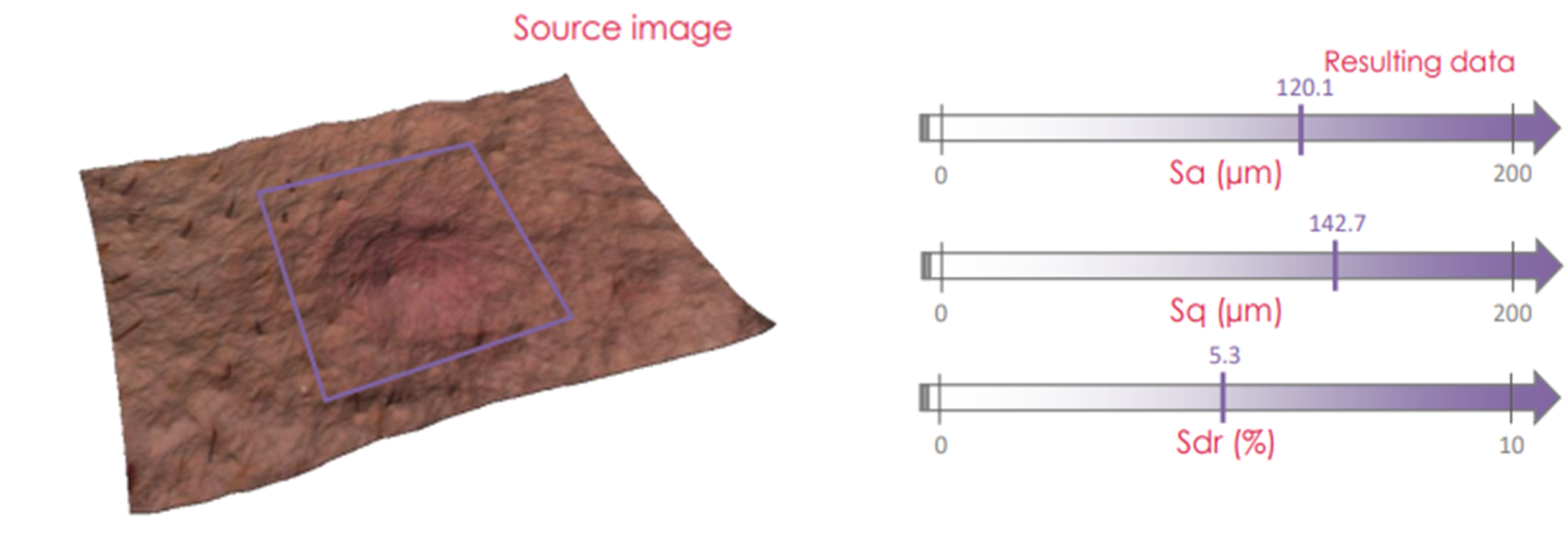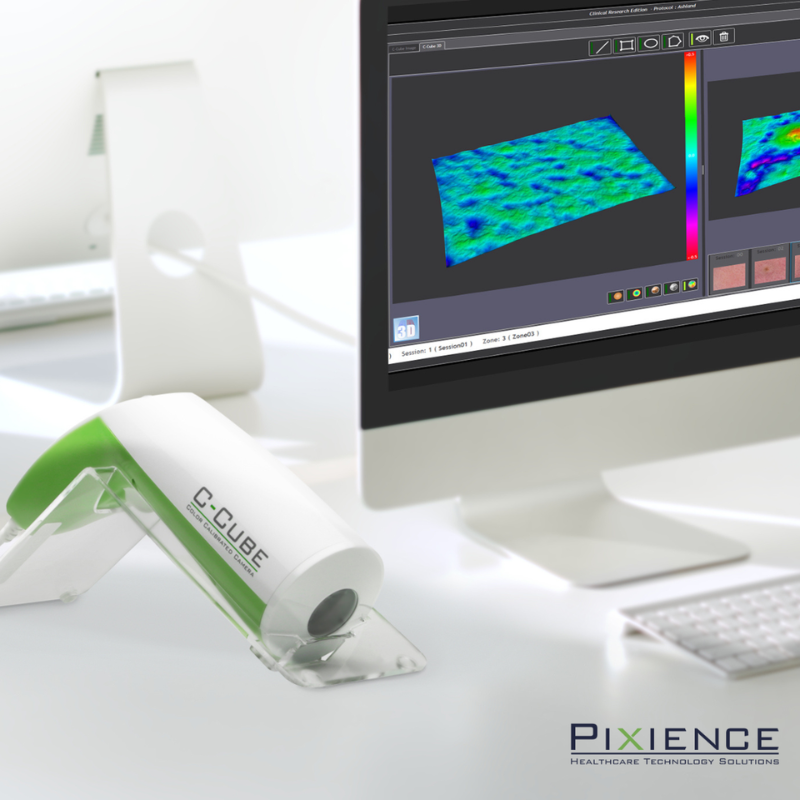Cell regeneration is a natural process which consists of renewing our epidermis. This mechanism peaks in the evening between 11pm and 2am.
Skin with a good capacity for regeneration is firm, shiny and smooth. It helps to slow down the signs of skin ageing and protect it from external aggressions.
The average regeneration time is 3 to 4 weeks. However, ageing and external shocks (sun, pollution) slow down this process.

Hydration
Moisturising products are full of water and help the skin to regenerate. Use the C-Cube 3 to measure the effectiveness of the active moisturising ingredients in your products. This can be done by analysing skin dryness.
Skin dryness manifests itself as visible desquamation. Skin flakes are usually whitish and become visible when they are significantly clearer than the skin.
That’s why Pixience exploit the L* component to locate pixels that are significantly whiter than their surroundings. They produce a binary image where white pixels are lighter than others indicating the detected flakes. The area covered by the flakes, relative to the area of the field of view is calculated and provided as the resulting value of this score.
Roughness
Skin roughness can be due to an accumulation of dead cells. This phenomenon is due to problems with the regeneration process.
Using a technique called photometric stereo, the C-Cube system analyses multiple images under different lighting conditions to estimate surface normals.
Combined with a geometric calibration the software produces elevation information at each pixel and the roughness parameters Sa, Sq and Sdr. Sa and Sq represent the average distance (respectively arithmetic and quadratic) to the average elevation of the ROI. Sdr, is expressed as the percentage of additional surface area contributed by the texture as compared to the planar definition area.

Skin ageing
Age alters the skin’s ability to regenerate. So, products with anti-ageing claims help this mechanism. You can assess and characterise the signs of skin ageing, particularly wrinkles, with the C-Cube.
- Wrinkle depth measurement: it provides a 3D criterion called Sz: It’s the total amplitude in µm within a given region of interest.
- Wrinkle volume measurement: The volume is calculated automatically from the region of interest drawn around the wrinkle (broken line or polygon).
- Wrinkle length measurement: If the wrinkle is short enough to fit within the FOV of the C-Cube, you may use the line tool to measure it.
You may take several samples across the wrinkle to get an average depth, or alternatively, try to always target the exact same location.

Analyse your regenerating active ingredients with the C-Cube 3. Pixience supports you in all your clinical procedures.
CONTACT
Pixience
Sébastien Mangeruca
CEO
https://pixience.com/clinical-research-edition-software/?lang=en






